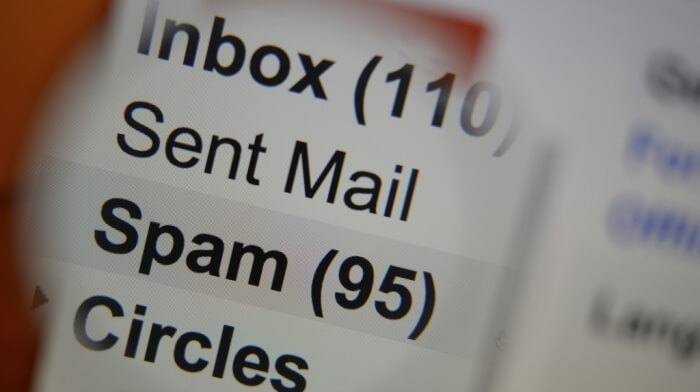Do you have a nice comprehensive strategy when it comes to your festive email campaigns? No? Then read our straightforward guide to attracting sales at Christmas (and retaining custom in the New Year).
’Tis The Season For Improving Your Marketing Emails
Do you have a nice comprehensive strategy when it comes to your festive email campaigns? No? Then read our straightforward guide to attracting sales at Christmas (and retaining custom in the New Year).

Seasonal email campaigns can be a funny thing. With Black Friday and Cyber Monday now been and gone, the planning now increases in frequency and importance: with Christmas and Boxing Week looming ever closer, your teams need to start thinking now of how to get in front of the customer in the right way, and how to convert those leads into sales.
If you haven’t already, think about applying your organisational know-how to your holiday email campaigns, ensuring they are mobile optimised. Recent research shows that over half of shoppers plan to use their smartphone to research and proceed to purchase holiday shopping items, and 20% of tablet users will redeem coupons on their tablets, according to the US-based National Retail Federation.
So how do you get in front of this tide of shoppers? Below are quick wins for your marketing planning cycle, some of which you may find useful as marketers taking on the challenges of seasonal holiday sending:
How often should I test a marketing campaign series in my initial seasonal deliveries?
Make sure that prior to re-targeting with your campaigns, your main marketing messages are being well received. Poor engagement metrics (low click or virtually no open rates) definitely mean that it’s time to rethink your approach. What may begin as blast emails should quickly shift to specific content geared toward each of your marketing segments.
We tend to recommend testing your marketing-based email campaigns every 2-3 weeks at an absolute minimum.
Do ISPs and spam filters become more strict during the holidays?
No. Spam filters and ISPs do not crack down on spammers or change their thresholds during the holidays. The same rules that apply the rest of the year apply during the holidays. Increases in blocking, filtering, and throttling are generally the result of increased mail volume and frequency, which in turn lead to lower engagement metrics and higher spam complaint rates.
My business is seasonal, so I only send my customers mail during the holidays. How do I avoid getting into trouble when I only send to my users once a year?
Only sending to your list once a year can put you at risk of hitting a large number of spam traps. When an email address goes unused for a long period of time, ISPs can repurpose these addresses into spam traps. We know that a year is more than enough time for an email address to become a spam trap, so what can you do to minimise the damage of sending to a list that is a year old?
When mailing an old list, I’d also recommend that you start off holiday campaigns by using re-engagement techniques. If a user interacts with the re-engagement message, add them to your standard holiday mailing list. For users who don’t interact with the message, try them one or two more times and (unless they engage) remove that address from your mailing list.
How can I make the most out of seasonal subscribers to my company’s newsletter?
Pay special attention to recipients who engage consistently over the holidays.
If they make a purchase, become active in a certain group, buy holiday cards, or listen to more music (whatever your business model is) make sure you’re interacting with them fully in response to their increased activity. It’s worth mounting a re-engagement campaign with just those new subscribers in January to see what works particularly well for this group.
How should I segment my campaigns - any special tricks I can use as I finalise my outreach?
Think about location in regards to where certain holidays are celebrated and segment your mail (campaigns) accordingly.
For example, don’t send Cyber Week centred emails to customers in a region where you know these kind of promotions aren’t available. Another way to look at this?
How do I prevent a mountain of unsubscribes?
We see an increase in sending volume sent by businesses over the holidays.
All the discounts, sales, special offers, and product launches are exciting! But unfortunately, the deluge of emails can be overwhelming. Offer recipients a chance to “down-subscribe” or opt-out of holiday-based emails in your preferences area. Those customers will be happy to hear from you again come January.
How do I ensure a level of consistency for my customers and remain “on-brand”?
Showing creativity and playing with your content during the holidays is a great way to increase engagement. But straying too far from your fundamental brand (from address, logo, etc.) can be a dangerous game. Your recipients need to be able to recognise you.
Poor sending practices can have a real impact on your overall sending reputation, and this isn’t only an effect experienced during the holiday period. Domain reputation, otherwise known as your assigned IP domain, can harm the effectiveness of segmented email campaigns.
If your marketing email generates enough negative feedback from recipients, and is being sent from the same domain as your transactional emails, it can actually harm your ability to get customer messages delivered. Domain reputation is becoming a more important factor in how mailbox providers decide whether or not your email lands in the spam folder, or arrives in an inbox.
Kate Schmeisser is a Content Marketing Associate at SendGrid
Thanks for signing up to Minutehack alerts.
Brilliant editorials heading your way soon.
Okay, Thanks!




